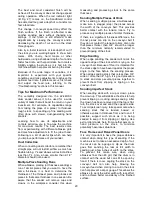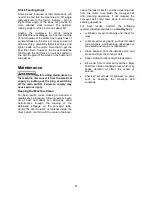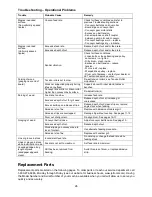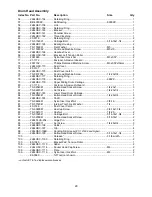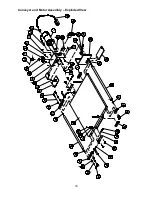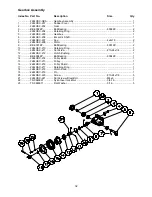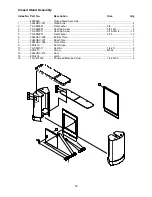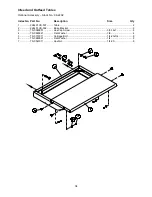
21
Stock Feeding Angle
Some pieces, because of their dimensions, will
need to be fed into the machine at a 90° angle
(perpendicular to the drum). However, even a
slight offset angle of the stock will provide for
more effective stock removal. The optimum
feeding angle for stock removal is about 60°.
Angling the workpiece for stock removal
provides other advantages, such as less loading
of certain areas of the drums due to glue lines or
mineral streaks in the stock, more even wear of
abrasive strips, potentially faster feed rates, and
lighter loads on the motor. Note that to get the
best final finish, however, the stock should be
fed through the machine so it will be sanded in
line with the grain of the wood on the final one or
two passes.
Maintenance
Before doing maintenance on
the machine, disconnect it from the electrical
supply by pulling out the plug or switching
off the main switch! Failure to comply may
cause serious injury.
Keeping the Machine Clean
For best results, make cleaning the sander a
regular shop procedure. Allowing excess build-
up of dust and debris can adversely affect
performance through the loading of the
abrasives, slippage on the conveyor table,
and/or the accumulation of material inside the
drums which can throw off the center of balance.
Leave the dust collector on when cleaning dust
from the drums. Also brush the conveyor belt
after cleaning operations. If not cleaned, the
conveyor belt could allow stock to slip during
sanding operations.
For best results, perform the following
recommended procedures on a
monthly
basis:
•
Lubricate conveyor bushings and check for
wear.
•
Lubricate all moving parts, such as threaded
rods, washers, and bushings. (Bearings are
pre-sealed and require no lubrication.)
•
Clean sawdust from the abrasive strip and
brush dust from the conveyor belt.
•
Keep oscillation roller and gib areas clean.
•
Blow dust from motors and switches. Blow
dust from inside of sanding drum, which may
cause vibration or offset the center of
balance.
•
Check all set screws for tightness on parts
such as bearings, the conveyor, and
couplings.














